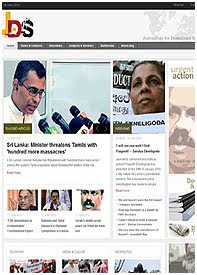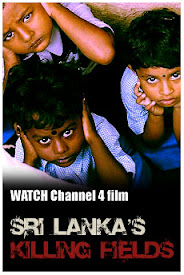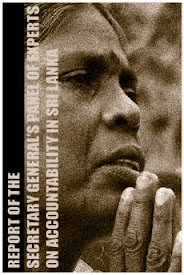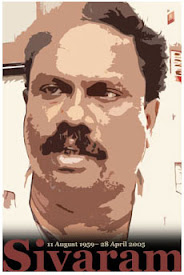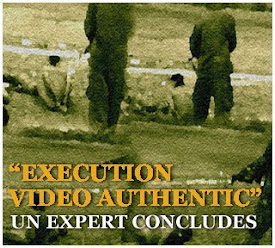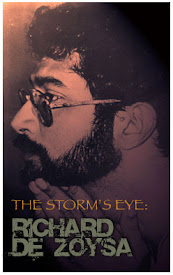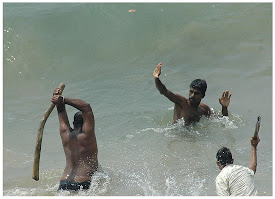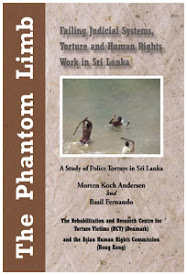
By Sampath Perera - Since the defeat of the Liberation Tigers of Tamil Eelam (LTTE) in May, the Sri Lankan government has pressed ahead with extensive plans to attract foreign investors and set up Special Economic Zones inside captured rebel territory. The pattern in the “liberated” northern areas follows similar developments in the Eastern Province, which was brought under army control in 2007.
In its final offensives, the military depopulated large swathes of land stretching from Mannar in the northwest to Mullaithivu in the northeast. Thousands of civilians were killed in indiscriminate aerial bombing and artillery barrages. Most of the remaining civilian population—around 280,000 people—were herded into squalid internment camps, where they are being held indefinitely.
Since May, the government has announced the Uthuru Wasanthaya (Spring of the North) program, which follows on from the previous Nagenahira Navodaya (Reawakening of the East). These plans are not aimed at providing ordinary people with housing, schools, hospitals and services, but at opening up these areas for investors.
According to the US business magazine Forbes, the government’s estimate for fixing the devastated economy in the North and East is at least “a $5 billion business”. Investment advisor Jim Rogers, co-founder of Quantum Fund, told the magazine that Sri Lanka was a compelling investment destination. “I have seen that when a long war like this ends, there rise enormous opportunities for investment,” he said.
Chinthaka Ranasinghe, research director for the blue chip Sri Lankan company, John Keels, told Agence France Presse: “These areas [in the North] have been virtually bombed out. This throws up enormous potential for investment. A large number of houses need to be built.” Keels added that with “new roads, schools, telephone and electricity lines ... the investment rebound will be spectacular.”
President Mahinda Rajapakse told Forbes that he would open a Singapore-style “one stop shop” to facilitate foreign investment. The magazine revealed that the government plans to offer a 15-year tax holiday to investors in the country’s Special Economic Zones (SEZs). The Board of Investment (BOI) is seeking $4 billion in direct investment by 2012, quadrupling the current level.
In the East, a SEZ in Trincomalee is already receiving investment and the government is planning two more SEZs in Batticaloa and Amparai. The BOI has also given approval for investment in the LTTE’s former northern headquarters of Kilinochchi and is establishing a new office in Jaffna to coordinate its activities in the North.
Under conditions of global economic recession, very cheap labour and lucrative government incentives in the island’s former war zones have become attractive.
Kumar Dewapura, chairman of Tristar Apparel Exports, has opened a factory in Trincomalee employing 1,000 workers, with the assistance of a 50 million rupee ($US425,000) BOI loan and a five-year tax holiday. He told the media last week: “There are orders if you can make it at the right cost. You only need to control cost and be competitive.”
Another garment manufacturer, the multinational Brandix, has invested 250 million rupees in the eastern district of Batticaloa and received similar government benefits.
The acquisition of land for various projects, including power plants, agriculture and SEZ construction, has become a major activity in the Eastern Province. The investment company Touchwood, which plants trees for commercial harvesting, has announced a request for 20,000 acres from the government, emphasising that foreign investors are looking for a minimum of 1,000 acres.
As part of the promotion of Trincomalee as a tourism area, the Tourism Ministry has unveiled plans to allocate 500 acres of land for hotel projects. It is also proposing to set aside another 4,000 acres of land and coastline for resort development.
President Rajapakse signalled his economic plans to exploit LTTE-held territory even before breaking the 2002 ceasefire and relaunching the civil war in July 2006. His government announced an SEZ of 675 square kilometres in the Sampur and Muttur districts in February 2006, even though the area was under LTTE control at the time.
In May 2006, the government took the unprecedented step of declaring that whole SEZ area to be part of a High Security Zone, covering the land, 14 mainly Tamil villages, and all adjacent waters. Two months later, Sampur and Muttur were among the first targets of the army’s renewed offensives. Under the regulations covering High Security Zones, no person, boat or vessel can enter the area without written permission from the authorities.
A study published in April this year by the Centre on Housing Rights and Evictions found that 4,249 families, totalling 15,648 people, were affected by the declaration of the Muttur/Sampur High Security Zone. In August and September 2006, the army cleared the area, not only of LTTE fighters, but much of the civilian population. In October 2006, the government licensed the SEZ to open for investment.
The war in the East drove nearly 300,000 civilians from their homes. The Sri Lankan web site Groundviews reported in August that the government, military and police were forcibly resettling families in newly cleared jungle areas in the Eastern Province, rather than their original villages and towns.
A similar process is being initiated in the North, which is being prepared for permanent military occupation. New military camps, high security zones and police stations are being established throughout the depopulated areas formerly held by the LTTE. Far from planning to demobilise soldiers following the end of the war, the army has announced a further expansion.
The Rajapakse government initially announced its intention of holding Tamil civilians in detention camps for three years. Amid international criticism, it promised to resettle 80 percent of the 280,000 detainees within 180 days, but the pledge was quickly shelved. The government’s priority is to establish infrastructure for investors.
The first international company to announce plans in the North is Dialog Telekom, the Sri Lankan unit of Malaysia’s Axiata Group Berhad. The corporation will spend $20 million this year to set up 60 mobile phone towers, Agence France Presse reported.
India has completed a feasibility study for a 400KV undersea power cable costing 20 billion Indian rupees (approximately $400 million) and is finalising an agreement with the Sri Lankan government. The cable will extend via the Jaffna Peninsula to other areas of the country.
The speed with which the government is opening areas captured from the LTTE to investors makes clear that the war was never about “liberating the country from the clutches of LTTE terrorism” as the government claimed. Rajapakse rejected peace talks and relaunched the war in 2006 in order to establish the economic and political dominance of the Sinhala elites over their Tamil counterparts.
Since the end of the war, Rajapakse has declared an “economic war” for “nation building”. The government’s economic plans in the North and the East underline the purpose of this new “war”: to suppress the working class and transform the island into a premier cheap labour platform for local and foreign investors.
© World Socialist Web Site
Monday, September 14, 2009
Sri Lankan government opens up captured territory for investors
Monday, September 14, 2009
Released' IDPs still in camps

Displaced Tamil people released from the camps in Vavuniya are still in camps, local political leaders say.
R Thurairatnam, a member of the eastern provincial council, told BBC Sandeshaya that 123 families released from Vavuniya camps are still kept in camps in Batticaloa.
360 people are currently kept in two schools, Sinhala Maha Vidyalaya and Kurukkalmadam Vidyalaya, in Batticaloa in early morning on Saturday.
Correspondents say the internally displaced people (IDPs) earlier released from Vavuniya camps were allowed to go home or visit their relatives.
'Over 9000 released'
Nearly 300,000 IDPs are held in government run camps in Vavuniya. The government has recently released some of them, elderly and children are mainly among them.
On Friday, nearly 2,000 or so people were allowed to leave the Menik Farm camp.
The government said 9900 IDPs were released.
“Among those released were 6838 to Jaffna, 2170 to Trincomalee, 683 to Batticaloa and 274 to Ampara,” a statement by the Defence Ministry website said.
Mr. Thurairatnam, a member of the EPRLF, was told by officials providing security at the Batticaloa camps that the IDPs will be released within next few days after registration process is over.
However, no reason was given for their continued detention, he said.
BBC Sandeshaya could not contact Resettlement Minister Risath Badiuddeen, despite repeated attempts.
© BBC Sinhala
Monday, September 14, 2009
Harrassed Tamils languish in prison-like camps in Sri Lanka

Randeep Ramesh - Living by a palm-fringed golden beach on the edge of the Indian Ocean, Suganthinhi Thesamanikam considers herself lucky to be alive after living through the hell of war.
Caught between the Liberation Tigers of Tamil Eelam (LTTE) and the Sri Lankan army, she dodged bullets and shells for two years before ending up on the sandy littoral where the rebel leadership was routed in May, in a bloody ending to a 25-year-old civil war. Three of her cousins were killed during the last days of heavy aerial bombardment.
Herded by the army, the 22-year-old then lived for four months under a tin roof, surviving on dry rations and going days without clean water in a vast, overcrowded camp behind barbed wire and armed soldiers.
"We were harassed day and night and the men were hit with rifles if they talked back to the soldiers. I don't know why, we were not LTTE, we are ordinary poor people," she said.
She was one of the first Tamils to be resettled from the camps last month, and says she has found some solace in her mother's shack on the seashore near the harbour town of Trincomalee. But her husband remains inside one of the camps. "He is not [a member of] the rebel LTTE. But the army says he cannot go home because his home village is near [the north Sri Lankan city of] Jaffna, where the LTTE were strong. We met during the war ‑ but now that is over I cannot have peace."
With less than 5% of the 300,000 Tamils released from what the United Nations describes as "internment camps", tales such as Thesamanikam's have only just begun to be told.
The 22-year-old was kept in Manik Farm, 160 miles north of Colombo, where 280,000 people were initially housed – more than double the number the camp was intended to cope with.
The camp, say former inhabitants, is packed, with two or three families sharing a tent or tin shack. There are complaints of stinking, overflowing toilets, water shortages and inadequate healthcare. Journalists are rarely given access and those inside Manik Farm are not allowed to cross its fortified perimeter. The government says it has to use extreme measures because hiding in the civilian population are LTTE soldiers.
Speaking on a phone that had been smuggled into the camp, one civilian being held in Manik Farm, who did not want to be named, said two families had "been taken away and not seen again after saying some wrong things" to a reporter last month.
"People are scared to tell anyone of the problems we are facing. But it is a prison here. There are not enough health facilities for the problems in the camp and we don't have enough water."
The Sri Lankan authorities recently allowed humanitarian relief workers into Manik Farm. The immediate criticism was that there were persistent water shortages. Then heavy rains sent rivers of sewage cascading through tents and tin sheds.
Now there are growing fears that with monsoon rains due in October, the camps could become a sea of thick mud and slop.
Doctors in the main hospital in Vavuniya, the largest town near the camp, say that more 1,000 people have died since May, mainly due to "malnutrition-related complications", and warn of an impending disaster if conditions do not improve.
"Things have improved in the camps as aid workers have come. But we will have to face a big disaster when the monsoon arrives here," said Muthulingam Lavan, the judicial medical officer in Vavuniya.
"The problem is that the camp lies on a flood-prone area. We'll have malaria, sewage and dengue fever. It will be very bad unless [people] are moved."
On Friday, nearly 10,000 refugees were sent back to their villages and the government has said it will move 100,000 people back to their homes in October. But ministers have yet to give detailed plans.
Attempts so far to send back people to their "native places" have also been criticised for being chaotic and underfunded.
A number of elderly people who had lived in LTTE territory for decades were taken back to towns they had not seen since they were children.
"I was left on the road with just the clothes I had carried from that prison," said Elizabeth Sarvanamuttu, who was "returned" to Trincomalee. "That is all I had with me. I was only saved because a local family adopted me. I am 68 and look, I had to be adopted like a baby."
Others, whose families were torn apart by the war, are waiting to be reunited. Ravi Ravidharan, living in the eastern city of Batticaloa, said he had been ferried out of the war zone in February after his wife was killed by an army bomb – an attack which shattered his baby son's leg. He left his two other children with his in-laws and has not seen them since.
Once his son was released from hospital the government provided no further assistance and he has eked out a living doing odd jobs while looking after his disabled two-year-old son.
"I traced my other children to Manik Farm," the 42-year-old said. "Because I lived in LTTE territory and all my possessions are lost I have no record to say my children are mine. Their mother is dead. How do I get them out?"
Jehan Perera, of Sri Lanka's National Peace Council, said tales such as these "evoke such sorrow, and stem from the government focus on security as its first priority. "We need some measure of assistance for innocent civilians."
There is growing pressure on the government to free the tens of thousands of Tamils still being kept in camps. The UN, which has provided funding of $188m (about £113m), says it cannot pay for the camps indefinitely. "We need not only for the government to let people go but also to allow freedom of movement," said a UN spokesman in Colombo.
But Sri Lanka insists it must screen everyone to weed out any rebels.
Authorities also fear that once the civilian population is returned, the Tamil Tigers will be able to regroup, despite claims that the organisation is all but finished.
"The military wing is dead," said a former fighter who was a commander with the Tigers' navy. "For now we have to live under the occupation of the army in our historic homeland. An uprising failed, that is all."
© Guardian
Monday, September 14, 2009
Sri Lanka’s war on aid workers
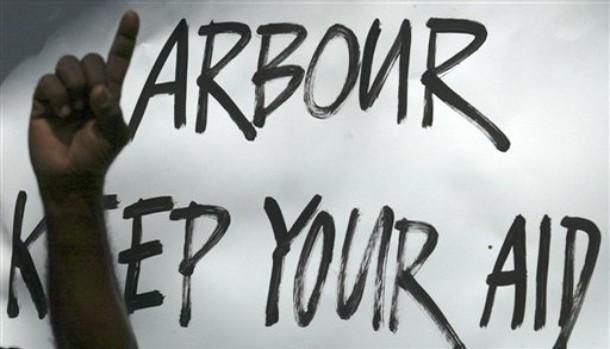
Stu Harrison - The communications chief for United Nations children’s charity UNICEF, James Elder, has been given until September 21 to leave Sri Lanka for making statements critical of the government.
Elder, an Australian citizen, has been charged over claims he issued statements supporting the views of the Liberation Tigers of Tamil Eelam.
For nearly three decades, the LTTE waged an armed struggle for an independent homeland for the Tamil people in the north of Sri Lanka, before being defeated militarily in May.
Elder spoke out on multiple occasions about the shocking humanitarian crisis facing Tamil civilians in Sri Lanka. He told June 4 Australian: “The nutritional situation of children [in the camps] is a huge concern for Unicef, and restrictions on access hinder our ability to save lives.”
For these kind of statements, he was labelled an LTTE sympathiser and enemy of the state.
Former Australian diplomat turned Sri Lankan foreign secretary Palitha Kohona accused Elder of being biased in favour of the LTTE. “Mr Elder was doing propaganda in support of the LTTE”, Kohona told AFP on September 6.
Elder’s expulsion continues Sri Lanka’s long-running war on aid organisations, who are routinely banned from access to internment camps and other disaster areas by the Sri Lankan authorities.
UNICEF’s attempts to appease the Sri Lankan authorities have failed to free them from state harassment. UNICEF has been involved in supporting, with the Sri Lankan government, controversial internment camps and “rehabilitation” centres for Tamil civilians.
But UNICEF has itself admitted to often being denied access to these facilities.
Many aid workers fear speaking out about conditions facing Tamil civilians, as this often means deportation and can jeopardise their aid programs.
Philip Alston, the UN’s special rapporteur on extrajudicial, summary or arbitrary executions, told Al Jazeera on September 1: “I think the United Nations is in a difficult situation in the sense that it's really a grouping of states and the government of Sri Lanka has been very effective in terms of garnering the support of a large number of states and that does seem to have made the UN rather reluctant to speak out on these issues.”
On July 9, Sri Lanka called on international relief organisations to scale down their operations in the country. This is despite the fact that more than 250,000 Tamils languish in overpopulated internment camps and many more remain in “rehabilitation centres” for their alleged involvement with the LTTE.
For a government that continues to lie about its involvement in the deaths of large numbers of civilians and continuing disasterous conditions in their so-called welfare camps, this response is not surprising. The attacks on aid workers is simply another piece of the Sri Lankan regime’s wider war on dissent.
© Green Left Weekly
This site is best viewed with firefox

Search
Is this evidence of 'war crimes' in Sri Lanka?
Archive
- ► 2010 (1312)
- ► 2011 (687)
Links
- Reporters Sans Frontières
- Media Legal Defence Initiative
- International Press Institute
- International News Safety Institute
- International Media Support
- International Freedom of Expression eXchange
- International Federation of Journalists
- Committee to Protect Journalists
- Asian Human Rights Commission
- Amnesty International
